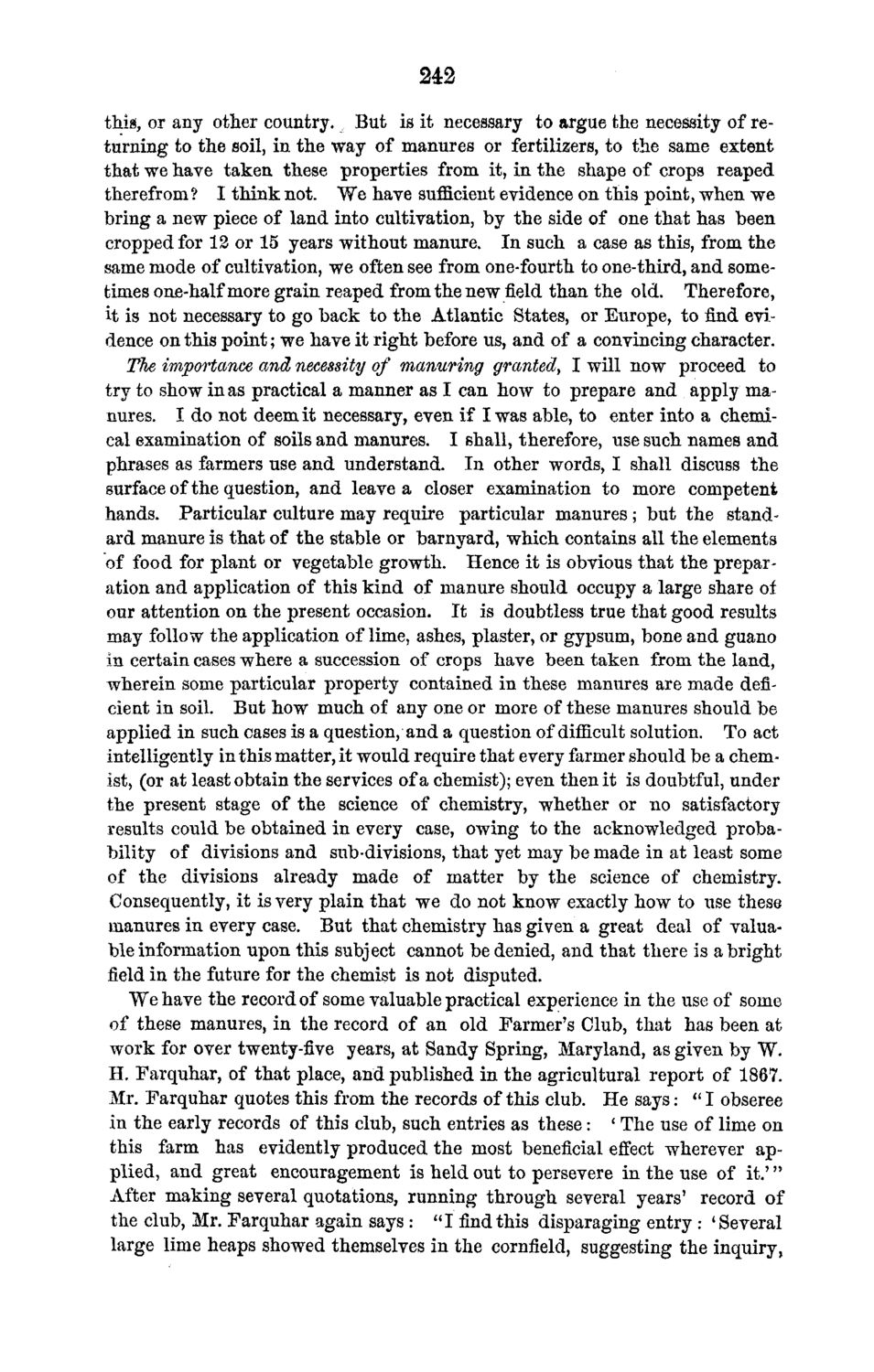| |
| |
Caption: Board of Trustees Minutes - 1870
This is a reduced-resolution page image for fast online browsing.

EXTRACTED TEXT FROM PAGE:
242 this, or any other country. But is it necessary to argue the necessity of returning to the soil, in the way of manures or fertilizers, to the same extent that we have taken these properties from it, in the shape of crops reaped therefrom? I think not. We have sufficient evidence on this point, when we bring a new piece of land into cultivation, by the side of one that has been cropped for 12 or 15 years without manure. In such a case as this, from the same mode of cultivation, we often see from one-fourth to one-third, and sometimes one-half more grain reaped from the new field than the old. Therefore, it is not necessary to go back to the Atlantic States, or Europe, to find evidence on this point; we have it right before us, and of a convincing character. The importance and necessity of manuring granted^ I will now proceed to try to show in as practical a manner as I can how to prepare and apply manures. I do not deem it necessary, even if I was able, to enter into a chemical examination of soils and manures. I shall, therefore, use such names and phrases as farmers use and understand. In other words, I shall discuss the surface of the question, and leave a closer examination to more competent hands. Particular culture may require particular manures; but the standard manure is that of the stable or barnyard, which contains all the elements of food for plant or vegetable growth. Hence it is obvious that the preparation and application of this kind of manure should occupy a large share of our attention on the present occasion. It is doubtless true that good results may follow the application of lime, ashes, plaster, or gypsum, bone and guano in certain cases where a succession of crops have been taken from the land, wherein some particular property contained in these manures are made deficient in soil. But how much of any one or more of these manures should be applied in such cases is a question, and a question of difficult solution. To act intelligently in this matter, it would require that every farmer should be a chemist, (or at least obtain the services of a chemist); even then it is doubtful, under the present stage of the science of chemistry, whether or no satisfactory results could be obtained in every case, owing to the acknowledged probability of divisions and sub-divisions, that yet may be made in at least some of the divisions already made of matter by the science of chemistry. Consequently, it is very plain that we do not know exactly how to use these manures in every case. But that chemistry has given a great deal of valuable information upon this subject cannot be denied, and that there is a bright field in the future for the chemist is not disputed. We have the record of some valuable practical experience in the use of some of these manures, in the record of an old Farmer's Club, that has been at work for over twenty-five years, at Sandy Spring, Maryland, as given by W. H. Farquhar, of that place, and published in the agricultural report of 1867. Mr. Farquhar quotes this from the records of this club. He says: " I obseree in the early records of this club, such entries as these: * The use of lime on this farm has evidently produced the most beneficial effect wherever applied, and great encouragement is held out to persevere in the use of it.'" After making several quotations, running through several years' record of the club, Mr. Farquhar again says : " I find this disparaging entry : ' Several large lime heaps showed themselves in the cornfield, suggesting the inquiry,
| |